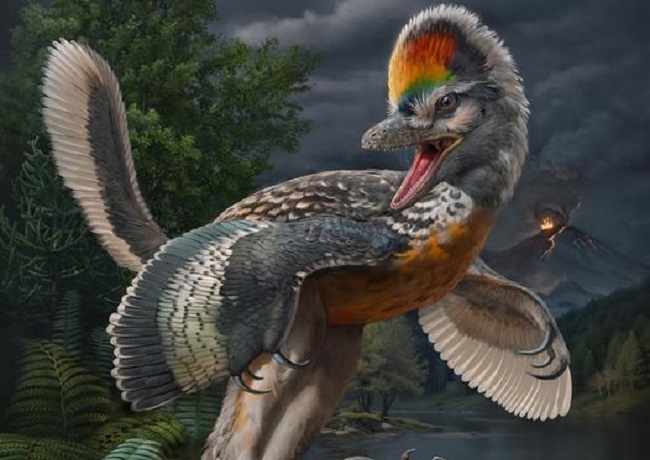One of the Earliest Birds Ever Discovered Has Rare, Stork-Like Legs
Posted on Categories Discover Magazine

The recent discovery of a long-legged bird that lived about 150 million years ago shows how the evolution of modern birds occasionally took an odd turn. The bird also fills an important gap in the fossil record of early birds, which evolved from theropod dinosaurs.
Fujianvenator prodigiosus “exhibits a bizarre assembly of morphologies” borrowed from various groups of early birds, including the avialans that preceded modern birds, according to a press release.
Read More: 99-Million-Year-Old Baby Bird Feathers Discovered From a Long-Extinct Species
Foremost among them is a pair of stilt-like legs that would have propelled the bird along at high speeds. They may also have allowed the animal to wade through swamps, the new paper speculates. Alas, a more precise assessment isn’t available as the fossil’s foot bones were in poor condition.
Bird-Like Dinosaur
Those long legs put F. prodigiosus at odds with its fellow avialans and even theropods at large. The researchers have drawn a parallel to modern-day storks and cranes, which wade through aquatic areas. Like them, F. prodigiosus was probably a predatory wader, the paper says.
Despite having lived in the Late Jurassic (and despite its scientific name), this bird was relatively small. The specimen recovered was a juvenile about the size of a modern-day koklass pheasant, a partridge-like bird found in Asia and the Middle East. This little guy weighed an estimated 1.5 pounds and still had a youthful, underdeveloped skeleton.
Read More: Take an In-Depth Look at What Dinosaurs Really Looked Like
Wing Development
Changes in the forelimbs and wings normally drove avialan development, not the hind legs – yet the new find shows that evolution of the group took at least one major detour.
Avialans themselves amounted to a detour, albeit one that has lasted more than 150 million years. The process started with small, fast-moving theropod dinosaurs (not Tyrannosaurus rex) that may have jumped up into trees to avoid larger predators. Over time, these dinosaurs developed wings to help send themselves aloft.
Read More: Massive Flying Pterosaurs Evolved With a Little Help From Mom and Dad
Bird Fossil Record
The fossil record for early birds is sparse and dates to about 160 million years ago, the approximate age of the earliest avialans unearthed in northeast China and Germany.
Until the discovery of the long-legged bird, scientists had uncovered no other fossils for a period of 30 million years afterward in the fossil record, until the onset of Cretaceous bird fossils.
Read More: What Makes Archaeopteryx Fossils the Bizarre Bridge Between Dinos and Birds?
The Zenghe Fauna
Researchers from the Fujian Institute of Geological Survey and elsewhere discovered the new fossil in Zenghe County in Fujian Province in Southeastern China, an area known for its huge number of terraced farm fields. They also found some 100 other vertebrate fossils from 148 million years to 150 million years ago and have dubbed the spot the Zenghe Fauna.
“The extraordinary diversity, unique vertebrate composition, and paleoenvironment strongly indicate that this locality documents a terrestrial fauna,” said Zhou Zhonghe, a paleo-ornithologist with the Institute of Vertebrate Paleontology and Paleoanthropology, in a statement.